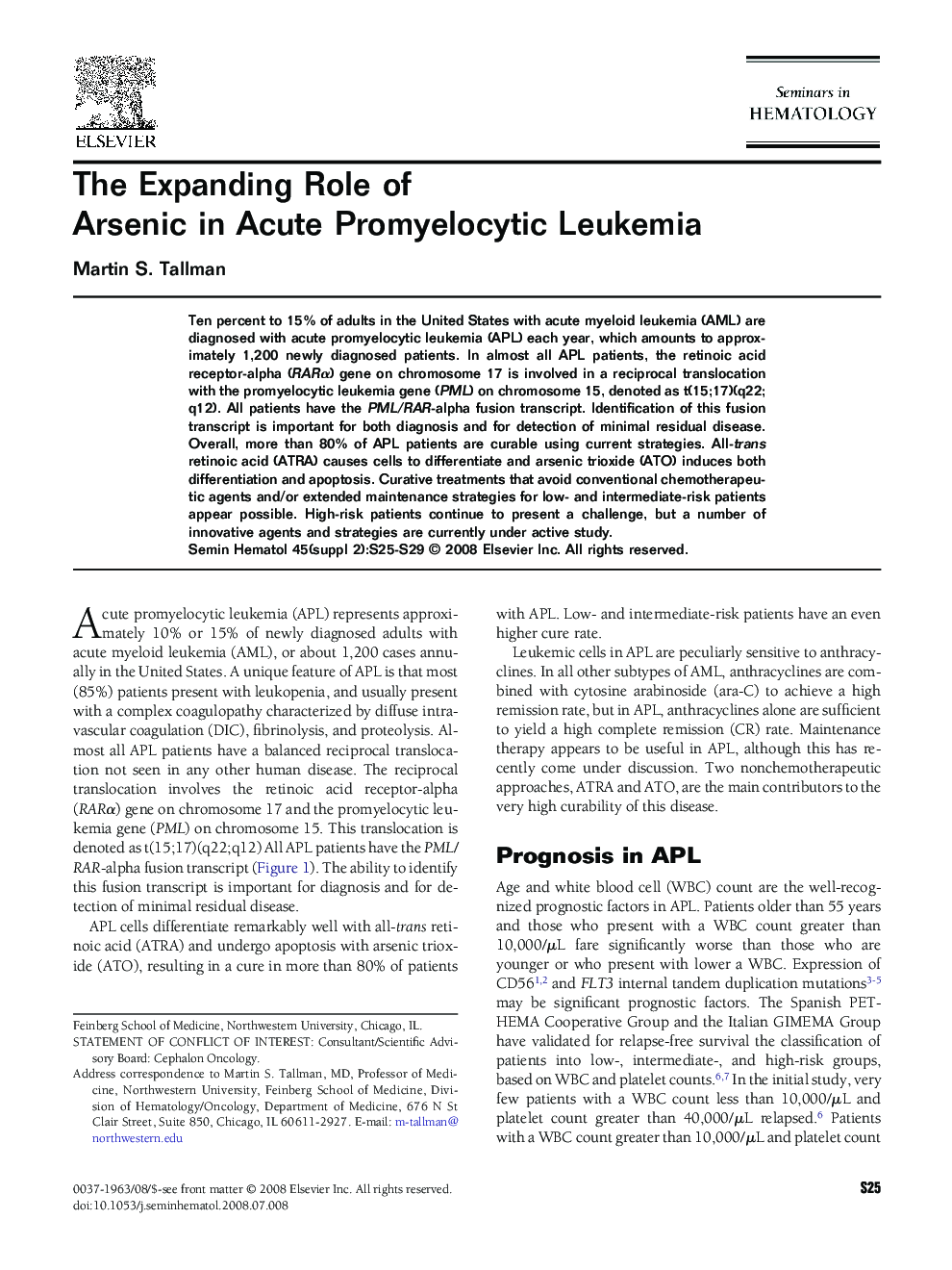| Article ID | Journal | Published Year | Pages | File Type |
|---|---|---|---|---|
| 3333865 | Seminars in Hematology | 2008 | 5 Pages |
Ten percent to 15% of adults in the United States with acute myeloid leukemia (AML) are diagnosed with acute promyelocytic leukemia (APL) each year, which amounts to approximately 1,200 newly diagnosed patients. In almost all APL patients, the retinoic acid receptor-alpha (RARα) gene on chromosome 17 is involved in a reciprocal translocation with the promyelocytic leukemia gene (PML) on chromosome 15, denoted as t(15;17)(q22;q12). All patients have the PML/RAR-alpha fusion transcript. Identification of this fusion transcript is important for both diagnosis and for detection of minimal residual disease. Overall, more than 80% of APL patients are curable using current strategies. All-trans retinoic acid (ATRA) causes cells to differentiate and arsenic trioxide (ATO) induces both differentiation and apoptosis. Curative treatments that avoid conventional chemotherapeutic agents and/or extended maintenance strategies for low- and intermediate-risk patients appear possible. High-risk patients continue to present a challenge, but a number of innovative agents and strategies are currently under active study.
